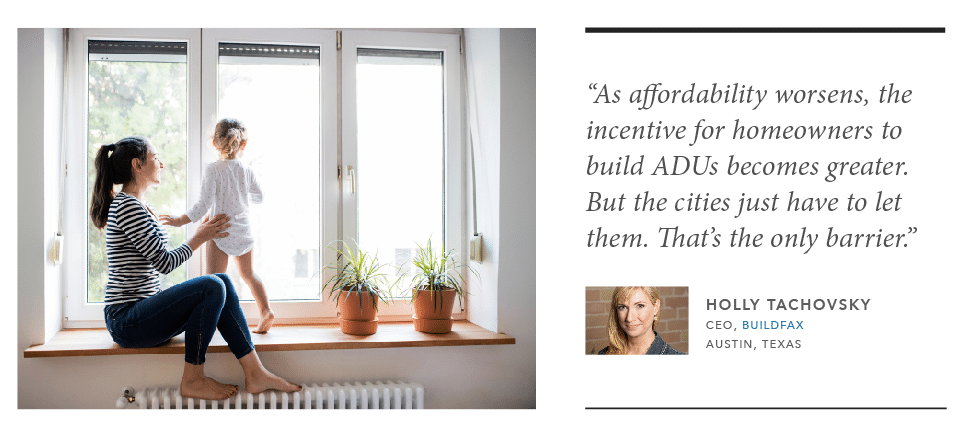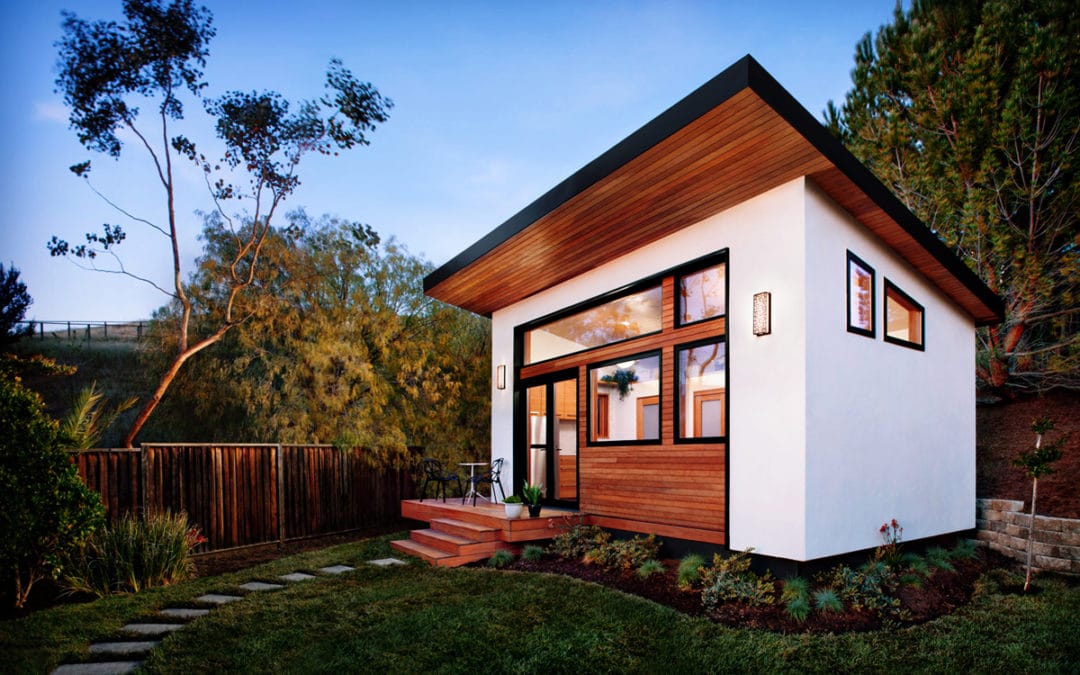A paucity of affordable housing that threatens to inflame a burgeoning homelessness crisis and trigger an exodus of well-paying jobs is forcing local governments to consider creative solutions to this intractable problem.
One such solution is to streamline the development of accessory dwelling units (ADUs) in the hopes that real estate developers and single-family homeowners can create more affordable housing inventory one granny flat at a time.
A trio of California laws that took effect in January 2017 is one of the examples of such attempt to streamline ADU development. The laws (SB 1069, AB 2299, and AB 2406), encourage cities to ease some of the common hurdles to the permitting and building of accessory dwelling units (ADUs) — also known as granny flats, in-law units or just second units — most notably parking requirements, setback requirements, and utility connection fees.
An Accessory Dwelling Unit Memorandum published in December 2016 by the California Department of Housing and Community Development claims that these “changes to ADU laws will further reduce barriers, better streamline approval and expand capacity to accommodate the development of ADUs.”
The legislation certainly appears to be accomplishing its goal of accommodating the development of ADUs. Statewide in California, building permits for ADUs increased 63 percent in 2017 compared to 2016, the biggest increase among 20 states with at least 100 ADU building permits issued in 2017, according to an ATTOM Data Solutions analysis of building permit data from Buildfax. Nationwide, building permits for ADUs were unchanged in 2017 compared to 2016.
California had the most ADU building permits issued in 2017 of any state, with 4,352, followed by Oregon (1,682), Washington (1,110), Florida (944) and Maryland (872).

“As affordability worsens, the incentive for homeowners to build ADUs becomes greater. But the cities just have to let them. That’s the only barrier,” said Holly Tachovsky, CEO at Buildfax, who noted that the rise in ADU building permits in some inventory- and affordability-challenged cities reflects a larger trend she has noticed in remodeling in the wake of the Great Recession. “Americans are now spending more money remodeling homes than they are building new ones. This flipped in 2009 and it has stayed flipped since then. The previous trend in all of recorded data before that — decades and decades — was new construction dollars were more than remodeling dollars.”





